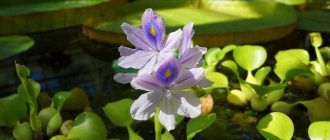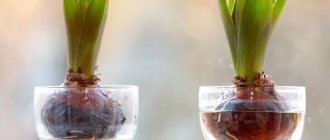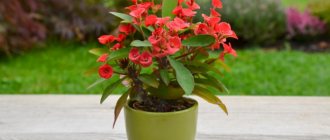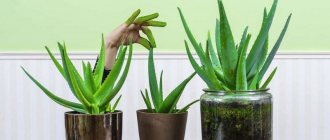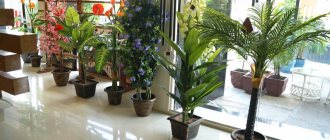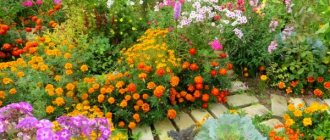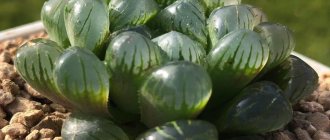Many people grow flowers on their windowsill or in their garden. This activity is enjoyable and brings joy. But a simple hobby can be turned into a family flower business that brings in a good income.
Let's consider the features of organizing
a business growing flowers at home , its positive and negative aspects, the required investments and profitability.
Pros and cons of business
The advantages include:
- High profits (with stable sales markets);
- Family form of business (if the family enjoys this business);
- Organization at home;
- Possibility to start with minimal costs;
- Variety of color choices;
- Increased demand during holidays;
- The ability to sell goods independently from your own hands.
Possibility of organizing a greenhouse business in cold climates Reducing physical stress when growing hydroponically
On the downside:
- High competition;
- Seasonality factor;
- Having the necessary knowledge on growing and caring for flowers.
As you can see, there are much more advantages than disadvantages . You just need to study specialized literature and choose a niche that is not occupied by competitors, or stand out from them with an original idea. And with the help of two or three selected areas of the flower business, you can compensate for seasonality.
It should also be taken into account that the flowers will need to be looked after and some work done: planting plants, transplanting seedlings, watering and propagating them, irrigating and fertilizing the soil, treating against larvae of pests and diseases, moistening the leaves, pruning and staking.
Phalaenopsis
The beautifully flowering and unpretentious phalaenopsis orchid reproduces well by “babies” (stem shoots, side shoots, peduncles).
To separate the baby, the mother specimen must be healthy and sufficiently developed - have a good root system and at least four large leaves. Only faded phalaenopsis can be propagated, preferably one that has rested for 1-2 months after flowering. This is usually done in the spring.
Usually, the beginning of the growth of children on phalaenopsis peduncles is facilitated by increased temperature and humidity. Using a clean, disinfected tool, the plants are carefully separated from the plants (stem shoots with 2-3 leaves and their own aerial roots, at least 5 cm long), both sections are dusted with ground charcoal and the plants are planted in separate containers with substrate.
Caring for young orchids after they are separated from the mother plants is no different from caring for adult phalaenopsis.
- How to propagate an orchid at home: 3 effective ways
The number of orchids in your home can be easily increased!
Registration of a flower growing business
If you are ready to carry out the tasks of growing and caring, then the idea of a flower business is for you. Keep in mind that the business will have to be registered:
- For small farms, the form of private household plot . Does not require payment of taxes, but will have to be sold through resellers;
- Individual entrepreneur is suitable for a small business. Provides for any sales options, but you will need to pay a 6% tax;
- a KFK for large volumes; it also requires payment of a tax of 6%.
What flowers are more profitable to grow for sale?
The most profitable flowers are tulips, lilies, crocuses and roses. For example, with a crocus price of 10-30 rubles. for a bulb and a growth period of 3-4 months, its market value will be 250-300 rubles. a piece. By calculating the income from each plant, we get a round sum.
In addition, these species have a variety of varieties and a regularly updated selection range. Thanks to this, you can quickly respond to changing flower trends and offer current varieties.
It is more profitable to select plants that require the same growing conditions . When choosing flowers, be guided by their market demand for the holidays:
- Prepare carnations for February 23 and May 9;
- Mimosas, crocuses and tulips are needed by March 8;
- Daffodils by May 25 at last call;
- Prepare gladioli and chrysanthemums for September 1;
- Roses, peonies, orchids and lilies are in demand at any time of the year.
From the wide variety of color options, you can choose the one that suits your conditions.
Growing indoor plants
The most popular flowers of this group: aloe, anthurium, dracaena, begonia, azalea, geranium, cacti, camellia, lemon, orchid, ficus. Most of them breed at home, allocating a separate room. At the same time, they focus on plants that are beneficial and do not emit harmful substances for humans.
Grow indoor flowers in pots. Care consists of watering, fertilizing, maintaining an optimal microclimate.
The cost of the plant will depend on its appearance and size. The average price for them is 300 rubles . If you sell a thousand pots a year, you can earn 200 thousand rubles. By dedicating a separate room or greenhouse, you can earn more.
Growing flowers in a greenhouse
Greenhouse flowers include mimosas, peonies, carnations, roses, daffodils, tulips, crocuses and other plants . Taking care of them is not easy, but with the right approach you can get a high profit of 600 thousand rubles. in year.
Growing medicinal plants
Open ground cultivation is suitable for this format. The season lasts from early spring to autumn. Income depends on the type of flower and the complexity of care.
They grow: lemon balm, chamomile, ginseng, sage, elecampane, rosemary, cornflower and other flowers for tea infusions and ointments . They are easy to care for and can be sold both fresh and dried.
One hundred square meters of land will produce 15 kg of plants worth 500 rubles. To prepare 30 acres it will cost about 100 thousand rubles. plus 15 thousand rubles. for the maintenance of the site. Thus, the net profit will be 210 thousand rubles.
Growing seedlings
This business is seasonal. Seedlings are grown in greenhouses from February to May , and sold until mid-June. This is how viola, pansies, lobelia, and azarina are bred . One small greenhouse can generate revenue from 20 thousand rubles.
Growing seedlings
The seedling business is quite simple, but profitable. Thus, the cost of rose seedlings varies between 200-400 rubles . And one square meter can produce several dozen seedlings per year.
Growing bulbs
The most popular are tulips, the bulbs of which can be grown in open ground.
To decide which direction of the flower business to choose for yourself: you need to decide on a place for planting: a garden plot, a greenhouse or a separate room in an apartment.
Decide what types of plants to grow: indoors, greenhouses or outdoors; study the market demand for flowers to assess profitability; pay attention to the level of competition.
Please note that there are flowers that require a one-time investment in planting material. There are some for which you will need to purchase it annually, and for some types it will be necessary to purchase a small amount of material. Below are the average prices for individual plants:
- Seeds for seedlings cost 40 rubles. for 300 pcs;
- Seeds of indoor flowers - from 1 rub. up to 40 rubles;
- Rose bushes - from 300 rubles. per piece;
- Tulip bulbs – from 20 rubles.
When choosing planting material, pay attention to its quality and appearance.
Types of propagation of indoor plants: vegetative and generative
There are two main methods of propagation of indoor plants: asexual (vegetative) and sexual or seed (generative).
With the vegetative method, the plant itself forms layering (for example, side shoots) or reproduces as a result of our intervention with the help of its individual parts, such as cuttings, leaves, and parts of shoots. As a result, young plants develop that are an absolute copy of the mother specimen. Since this does not require either flowering and pollination, or the formation of a fruit or seed, vegetative reproduction is also called asexual.
The ideal time for vegetative propagation of indoor plants is spring and early summer. In this case, young plants receive maximum light and develop best. Some plants, when pruned in spring, in any case have apical cuttings that can immediately be used for propagation. Plants that bloom in spring are propagated only after flowering. Cuttings of woody plants such as camellia and hibiscus can also be taken in the summer. The tubers are divided at the end of the dormant period. Some plants can simply be divided when replanting. And in this case we are talking about vegetative propagation.
The generative type of propagation of indoor plants is more complex, but when used, a completely new plant individual develops genetically, which has inherited a mixture of qualities of the paternal and maternal crops.
Since a seed can only develop as a result of fertilization of a flower, in this case we are talking about sexual reproduction. Seed propagation requires more time compared to vegetative propagation, but for those who like experimenting, it provides the opportunity to grow exotic species that are not commercially available.
The ideal time to propagate indoor flowers by seeds is spring. With artificial lighting, sowing is possible all year round.
Attention! Some plants contain toxic substances that release when cut and can irritate the skin or mucous membranes. It is easy to get injured on cactus needles. Therefore, it is better to work with gloves. While working, try not to rub your eyes with your hands; Make sure that plant juice does not get into open wounds.
For germination and root development, plants require a nutrient-poor substrate that retains moisture well, allows air to pass through, and does not contain harmful microorganisms. Ready-made mixtures for sowing, planting and picking, as well as pots with lightly fertilized peat, are available for sale.
For cacti, use a mixture of pumice sand, coarse quartz sand and soil for picking or for cacti. Succulents or cuttings of other species that require a very air-rich substrate can be planted in quartz sand or perlite (commercially available). Do not use construction sand! Orchids are planted in a special orchid substrate (commercially available).
Young hydroponic plants are grown on fine expanded clay (fraction 2-4 mm) or in synthetic cubes (commercially available).
To propagate home flowers you will need:
- Pots made of pressed peat, plastic or clay.
- Land for sowing or seedlings (or a swelling peat pot).
- A seedling box with a cover or heated greenhouse, alternative: a small greenhouse or heating mat for plants that germinate or take root in high temperatures.
- Labels.
- Waterproof pencil.
- Picking stick.
- A sharp kitchen or razor knife.
- Root growth stimulator.
- Powder or pieces of charcoal.
Next, you will learn how to propagate flowers such as orchids and cacti at home.
Where to grow flowers
The volume and types of plants grown are determined by the location of the business. If this is a dacha or a house in a village, it is better to build a year-round greenhouse. Growing indoor flowers is suitable for an apartment. If you have a plot of land, you should grow medicinal herbs and flowers for open ground.
If you choose the greenhouse method, you can install a seasonal or winter version:
- A seasonal greenhouse of 120 square meters costs about 200 thousand rubles . It will allow you to grow plants from February to November with the installation of additional equipment;
- An equipped all-season greenhouse will cost 450-460 thousand rubles . Any flowers are suitable for growing in it, including those traditional for spring holidays. A hydroponic system will help reduce labor costs;
- If you like growing indoor flowers, then you will need about 30 thousand rubles to equip your living space .
- To equip a separate business premises you will need 250 thousand rubles .
It is not necessary to use large areas at once ; 30 square meters is enough to start with. Having received the first experience and results of activity, it will be possible to think about expansion.
Flower markets
To sell your products, you need to develop a marketing program, which includes an analysis of sales markets in the form of wholesale and retail flower shops.
The implementation plan depends on the size of the business. The smaller it is, the easier it is to sell the product. Sales options:
- Selling through your own website and social networks;
- Sales to large flower shops;
- Open your own flower shop;
- Sales for the holidays in a shopping center or central city street;
- Sales through resellers;
- Sales from the greenhouse;
- Selling from a car.
Remember: by declaring yourself and your business, by advertising, you make money!
Purchase of seeds and bulbs
The future harvest of flowers depends on the quality of seeds and seedlings. Therefore, this important issue must be approached with special responsibility .
Suppliers of seed material can be found on the Internet, nurseries, and various exhibitions of crop production.
Seeds are purchased from January to May . In this case, both wholesale and retail purchases for testing are possible. Some people collect seeds from their own plants and propagate seedlings themselves, and develop new breeding varieties. Hybrids that are resistant to low temperatures, diseases and pests are popular.
Seeds should be stored in a dark, cool place for no more than one year, since if stored for a longer period they may not germinate.
Dracaena
The dracaena palm tree looks very impressive in any room. It is also unpretentious and reproduces quite easily. The most commonly used species in indoor floriculture is known as Dracaena marginata.
In order to get new plants, you will need to wait for the appearance of a young semi-lignified shoot on the stem of the dracaena. It needs to be cut off with a sharp, disinfected tool as close to the trunk as possible and generously sprinkle both cut points with crushed coal.
For the first time, the cuttings are placed in a glass of water, where the root formation stimulator is dissolved, and placed in a place without direct sunlight. As soon as the shoot takes root, it can be placed in the main container with moistened universal soil (there must be enough space for the root system!). Don't forget to water and spray it regularly.
- How to propagate dracaena at home - step-by-step master class with photos
Growing dracaena fringed from a shoot, following certain rules, is not at all difficult - let's see this together.
Purchase of fertilizers and remedies for pests and plant diseases
One of the stages of starting a business is preparing the ground . To save money, you can use meadow or forest soil. To do this, in early spring, the top layer of soil is removed and wrapped in a roll. Next, it is stored on the site, having previously been unrolled and covered with polyethylene.
The soil is irrigated several times and covered again to warm it up and destroy pests and weed spores. And only after that they are used for planting .
You can replace the soil with hydroponics nutrient liquid. This will simplify the work, although construction will cost 400 thousand rubles.
Fertilizers include mineral ones consisting of nitrogen, phosphorus and potassium, organic and universal in dry and liquid form, observing certain proportions.
The frequency of feeding is once every 10 days.
To combat pests and plant diseases, complex and specialized products are used: fungicides, insecticides of systemic and contact action. They usually buy from wholesale suppliers that they find on the Internet.
Growing flowers in open ground
If you decide to grow flowers in open ground, pay attention to the plant variety and the climatic features of the area. Planting is carried out by seedlings or by planting seeds in prepared soil. Cold-resistant crops can be sown in the third ten days of April, and heat-loving ones in May.
Let's look at the features of cultivation using petunia as an example, which can bring the greatest income. It will decorate any area thanks to the variety of colors and shades. Bush petunias can be planted in boxes or flower beds. Pots are suitable for cascading varieties.
The average cost is 20-30 rubles. a piece . The box holds 60 bushes. We get 1800 rubles. from the box. During the year you can sell 200-300 boxes. Plants do not require special care, so maintenance costs will be minimal.
Asters, marigolds, sage, bush chrysanthemum and other popular flowers are grown in open ground.
Choosing Plants for Beginners
In order not to be disappointed in your hobby, you must first choose unpretentious flowers. If you prefer flowering specimens, then you should plant shade-loving plants. These are anthurium, spathiphyllum, clivia.
Among the unpretentious and non-flowering ones, it is best to choose fern, ficus, cyperus, chamedorea and others.
You can choose those that do not require regular watering: cacti, aloe, rebutia, spurge.
If time permits, it is better to start with flowering specimens, because they are better than others at raising your spirits. If you bought a flower in a store, when you bring it home, give it time to adapt, and then determine the location and replant.
Having chosen a flower, study the conditions in which it will be comfortable to grow. Read information about preferences for watering, humidity, lighting. Some plants can quickly adapt to a new environment, while others take time to adjust.
Don't try to water too much right away. Remember that not all flowers like to be filled with water. And be sure to observe the temperature regime, provide lighting and air humidity.
Growing flowers in a greenhouse
As mentioned earlier, all possible plants can be grown in a winter greenhouse. This method brings the most income. A small greenhouse of 120 square meters with an investment of about 950 thousand rubles. with payback within a year will give a profit of 1,190 thousand rubles.
To build a year-round greenhouse you need:
- prepare the site;
- dig a pit - 7 thousand rubles;
- pour a strip foundation - 53 thousand rubles;
- erect a metal frame - 45 thousand rubles;
- cover with polycarbonate - 85 thousand rubles;
- install equipment: infrared lamps for heating, well and irrigation, lamps for lighting - 160 thousand rubles;
- make ventilation using the correct arrangement of transoms.
We take into account the costs of purchasing equipment and garden tools - 80 thousand rubles, planting material - 315 thousand rubles, documentation of the greenhouse - 10 thousand rubles, services of an agronomist - 5 thousand rubles. and other unforeseen costs - 20 thousand rubles. The amount comes out to 800 thousand rubles.
Flower seedling business
The least expensive option for making money from flowers is growing seedlings. For this, cassettes with cells with a volume of 100-300 milliliters are used, costing up to 1 ruble. or plastic boxes . Disposable glasses are also suitable for containers. For 120 square meters you will need 10 thousand cups worth 10 thousand rubles. or boxes for 45 thousand rubles. These costs will be annual.
For seedlings, special soil is suitable, the cost of which is on average 10 rubles. per liter To save money, it is mixed with disinfected garden soil.
During the first two weeks, flower seedlings are kept in peat, then planted in soil made of fine sand, humus, peat and garden soil in equal proportions. At the same time, the cost of such soil will be 20 thousand rubles.
Proper landing consists of the following steps:
- the container is filled with earth, making grooves or holes, and watered with warm water;
- lay the seeds 0.5-3 centimeters and sprinkle with soil;
- cover with film until shoots appear;
- remove the film and additionally illuminate for 16-18 hours for the first 3-4 days;
- When seedlings grow, daylight hours are shortened to normal.
Seedlings require good regular care and watering with soft water at room temperature. Fertilizing should be done with complex fertilizers every 7-10 days. To minimize the complexity of care, you can initially maintain a distance between the seeds or plant them in cells.
Tips for beginner gardeners
Location
Try to immediately provide the purchased plant with a permanent place in your home. Most plants really don't like being moved from place to place. For example, an adult monstera cannot tolerate rearrangements, but if this happens, it takes a long time to adapt and gets sick.
If you want to buy an indoor flower, be sure to decide in advance what place it will occupy in the interior of the apartment.
I hope that our advice will help you take the most, albeit not entirely firm, but already correct and necessary steps.
Watering
All indoor plants and flowers require watering with well-settled and soft water. If there are a lot of plants in your house, then you can use a bucket where the water will settle for two days.
If you have a small number of flowers, you can use plastic bottles without closing them with a lid and allowing the chlorine to evaporate from the water. In indoor floriculture, there are some plants that do not tolerate watering with hard water at all; this causes the plants to become seriously ill, and there have been cases when the flowers died.
Transfer
To replant plants, it is best to use a commercial soil mixture suitable for indoor plants. Often, recommended floriculture literature provides the composition of the soil mixture required for each plant, but many beginning gardeners do not know where to get turf (peat) soil.
In this case, garden or greenhouse soil containing well-washed river sand is usually used. Before replanting the plant, the soil must be disinfected.
Disinfection can be performed in two ways:
- The first method is to generously spill the substrate with a weak solution of potassium permanganate (this will also help remove earthworms).
- The second way is to steam the substrate in the microwave for two to five minutes.
Air humidity
The main reason that plants suffer from in apartments is central heating. Heating radiators are located near the windows and it is not possible to place our indoor plants, which receive little light in winter, away from the radiators.
Therefore, air humidity should be increased:
- spray plants more often;
- hang wet fabrics on central heating radiators;
- install open containers filled with water in the room;
- Place the flower pot on a tray filled with gravel and water.
Pests and diseases
If a houseplant suddenly loses its appearance, then the flower may be sick. It is urgently necessary to carefully examine the plant using a magnifying glass, paying special attention to the leaves (examining them on both sides), stems and flowers for the presence of pests.
Many are surprised that flower pests arise spontaneously, as if appearing out of nowhere. But there is an explanation for everything; plant pests are easily transmitted by insects such as the Drosophila fly and ordinary flies.
Some pests can survive in the substrate for a long time and wait for favorable conditions to continue their life activity. Sometimes indoor flowers can be infected even before they are purchased - this becomes obvious only after purchasing them.
How much do you need to invest at the start?
So, depending on the idea of earning money, the amount of investment will be different. The table shows approximate calculations:
- Growing in an apartment 30 thousand rubles;
- Growing in open ground 150 thousand rubles;
- Growing in a separate room 250 thousand rubles;
- Installation of a seasonal greenhouse for 120 square meters 200 thousand rubles;
- Installation of a year-round greenhouse for 120 square meters 465 thousand rubles;
- Registration of documents 10 thousand rubles;
- Purchase of work clothes 5 thousand rubles;
- Purchase of equipment 5 thousand rubles;
- Take into account the annual costs of:
- purchase of planting and consumable materials, containers, soil, fertilizers
- water supply and electricity
- paying taxes
Profitability of the flower business
The flower business is one of the most profitable. The markup is 100-150% , and on holidays it reaches 300% . Even with high competition in sales, you can find your niche and make a decent profit.
With a competent approach to organizing a business, you can earn more than 600 thousand rubles. in year. Let's look at the profitability of some types of plants: Variety Initial investment Net profit per year
- Seedlings 127 thousand rubles. 320 thousand rubles.
- Indoor flowers 97 thousand rubles. 203 thousand rubles.
- Medicinal plants 15 thousand rubles. 210 thousand rubles.
- Tulips 720 thousand rubles. 680 thousand rubles.
- Roses 720 thousand rubles. 785 thousand rubles.
- Crocuses 710 thousand rubles. 690 thousand rubles.
elephant tree
This is a very tall houseplant. In a pot it can reach 1.5 meters, and in its natural habitat - up to 10 meters.
This plant is characterized by a thick trunk that resembles an elephant's leg. This is a very ornamental plant, and caring for it is as simple as possible. He just needs enough natural light, but it must be indirect. Good drainage is also recommended and the soil moisture should be checked periodically before watering.



